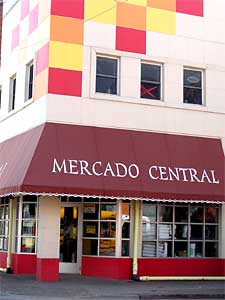Axochiapan is a town and municipality in the small state of Morelos in central Mexico. According to the 2010 census, the population of Axochiapan municipality has grown only slowly over the past decade, from 30,436 in 2000 to 33,695 inhabitants in 2010, half of them living in the eponymous cabecera municipal (the main town of the municipality).
One of the more curious things about Axochiapan is that three of every ten people born in the municipality now live in the same small area of Minneapolis in Minnesota, USA.
By 2005, the Minneapolis-St.Paul area already had a large Hispanic community, served by 22 churches offering services in Spanish, 9 Spanish-language newspapers, 3 tortilla makers and 9 Hispanic-mostly Mexican-soccer leagues. It even has a Mexican consulate to serve the growing number of Mexican migrants living there. For more details, see:
- 2005 New York Times article: Way North of the Border, by Eduardo Porter and Elisabeth Malkin.
- La Alborada Market on East Lake Street, Minneapolis, by Lori Writer
As many as one-third of the people born in Axochiapan are thought to have moved to “El Norte” (= USA); it is estimated that 90% of all the families in Axochiapan have representatives currently living in Minneapolis-St.Paul.
According to the 2000 census, 41,600 Mexican-born people lived in Minnesota, compared to only 3,500 a decade earlier. By 2010, the figure had risen to about 68,000.
East Lake Street in Minneapolis has become a center for Mexican commercial activity, from Mexican butchers and video rentals to jewelry making, travel agents and money exchange offices. The hub of Mexican commerce is the Mercado Central, a member-owned cooperative of 48 Latino businesses opened in 1999.
Why do Mexicans migrate here?
- Population pressure in Mexico – the 15-40-year-age bracket (the main migrant age groups) is still growing in Mexico and will for the next few years.
- Economics – poor salaries and few job opportunities persist in rural areas of Mexico such as Axochiapan, despite numerous civic improvements, such as the paving of streets, largely financed by remittances sent home by migrants.
- Networks of migrants provide support and encouragement for relatives and friends, making it far easier for successful migration and adaptation to life in the USA
Is migration from Axochiapan to Minnesota coming to an end?
There is growing evidence that Mexican migration to the USA is slowing down. If this turns out to be the case, it is probably a combination of the poor US economic performance in recent years, the relative strength of Mexico’s economy during that time, and the increased costs associated with entering the USA as an undocumented worker. In addition, US migration policy seems to be encouraging undocumented workers to remain, rather than return home periodically.
Conclusion? Migration flows such as this one, from Morelos to Minnesota, may currently be weakening, but it is far too early to say whether or not this decline will last for very long.
Related posts:
- Migration channels between Mexico and the USA, or how distant towns are linked through migration
- Over half a million natives of the state of Puebla live in New York City
Migration between Mexico and the USA is the focus of chapter 25 of Geo-Mexico: the geography and dynamics of modern Mexico. Ask your library to buy a copy of this handy reference guide to all aspects of Mexico’s geography today! Better yet, order your own copy…

Sorry, the comment form is closed at this time.